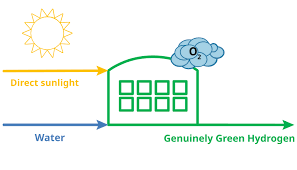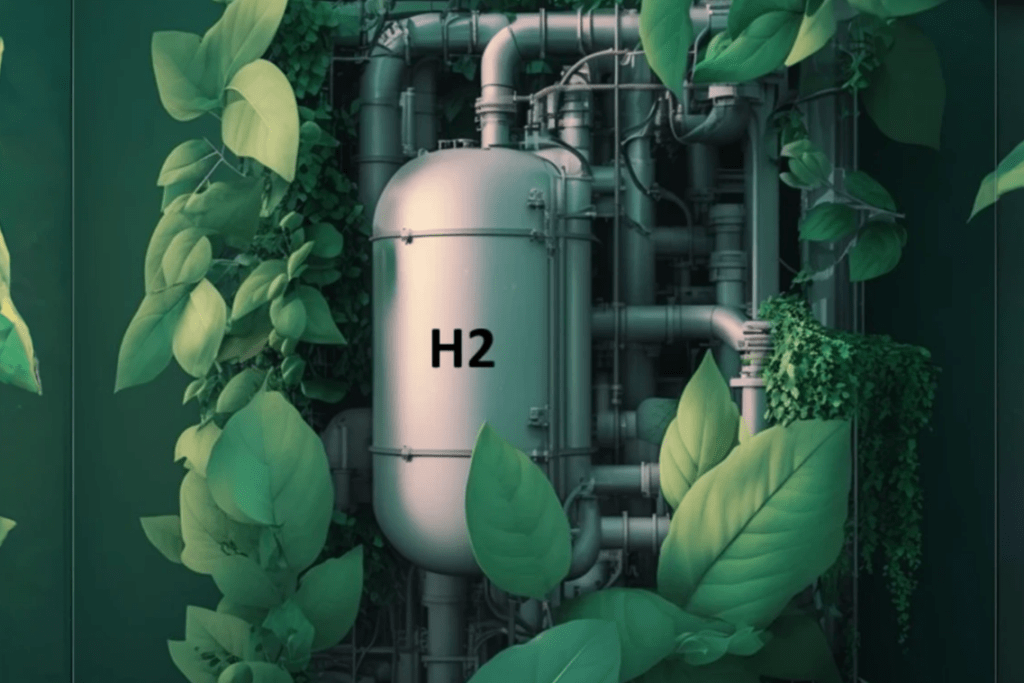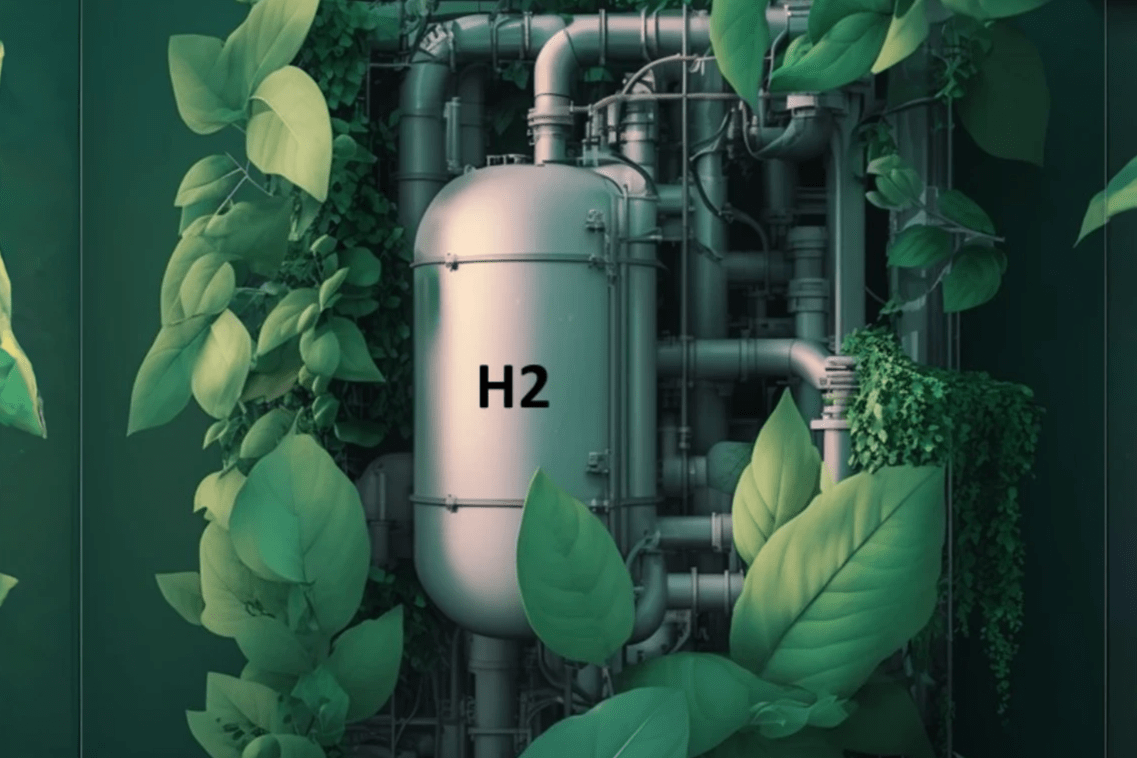In the escalating fight against climate change, the search for sustainable energy alternatives has taken center stage. While renewable energy sources like solar and wind power have made significant strides, they remain inconsistent, limiting their capacity to provide around-the-clock energy for industries and critical infrastructure. This is where green hydrogen emerges as a transformative solution. Produced by splitting water molecules with renewable energy, green hydrogen offers the potential for a reliable, clean fuel that could revolutionize multiple sectors.
Recent research from the University of North Carolina-Chapel Hill (UNC) brings renewed optimism to this field. The UNC team has developed a method for generating green hydrogen more efficiently by harnessing solar energy. This breakthrough could accelerate the widespread adoption of hydrogen as a clean energy source, offering a critical tool in the global transition to a low-carbon economy.
What is Green Hydrogen?
Green hydrogen is a type of hydrogen fuel that is produced using renewable energy, primarily through a process known as electrolysis. In this process, electricity generated from renewable sources, such as solar or wind power, is used to split water molecules (H₂O) into hydrogen (H₂) and oxygen (O₂). The resulting hydrogen can then be used as a clean fuel. This contrasts with “grey” or “blue” hydrogen, which are produced using fossil fuels and may still release carbon dioxide (CO₂) into the atmosphere.
The key appeal of green hydrogen lies in its zero-emission nature. When burned or used in fuel cells to generate electricity, the only by-product is water vapor. As a result, green hydrogen offers a sustainable alternative to fossil fuels in sectors that are difficult to electrify, such as heavy industry, transportation, and energy storage.
Why Green Hydrogen is a Beacon of Hope
The potential of green hydrogen is vast, offering several key advantages that position it as a leading candidate in the transition to a decarbonized future:
- Clean Combustion: Unlike fossil fuels, which release significant quantities of greenhouse gases when burned, green hydrogen combusts cleanly. This means no carbon dioxide, methane, or other harmful pollutants are emitted, making it an attractive option for sectors like manufacturing, aviation, and shipping, where emissions are traditionally hard to mitigate.
- Energy Reservoir: One of the primary benefits of hydrogen is that it can be easily stored and transported. This overcomes one of the critical limitations of solar and wind power, which are dependent on weather conditions. Green hydrogen can serve as an energy reservoir, providing a backup power source during periods of low sunlight or wind, ensuring consistent energy availability.
- Versatile Fuel: Green hydrogen holds immense promise across various industries. It can be used to power electric vehicles, especially in heavy-duty transport where batteries may not be feasible due to weight and range constraints. Additionally, hydrogen can replace natural gas for heating homes and businesses and be used in industrial processes like steelmaking, which currently rely heavily on fossil fuels.
Challenges and Illuminating Solutions
Despite its vast potential, green hydrogen has faced several hurdles to widespread adoption. Most hydrogen produced today is derived from natural gas, a process that emits significant amounts of CO₂. This reliance on fossil fuels undermines the environmental benefits of hydrogen and contributes to the very problem it aims to solve—climate change.
Moreover, until now, the methods for producing green hydrogen using renewable energy sources, particularly solar power, have been inefficient and costly. The energy required to split water molecules often exceeds the energy generated, making large-scale production unsustainable.
This is where the UNC research offers a breakthrough. By developing a more efficient process to harness solar energy and split water into hydrogen and oxygen, UNC scientists have paved the way for more economically viable green hydrogen production. This innovation could reduce costs, increase energy yields, and bring the vision of a hydrogen-powered future closer to reality.
Ecological Solutions to Light the Way
To fully unlock the potential of green hydrogen, a multifaceted approach is required, combining advancements in technology with broader ecological initiatives. Below are several key strategies that could enhance the development and deployment of green hydrogen.
- Harnessing Renewables: Central to green hydrogen production is the use of renewable energy. Solar, wind, and geothermal sources are all essential for ensuring that the hydrogen production process is clean from start to finish. The more renewables are integrated into the energy grid, the greener and more sustainable hydrogen production will become.
- Material Innovation: One of the most promising areas for improving green hydrogen production is in the development of new materials for catalysts. Catalysts are used to accelerate the water-splitting process during electrolysis, and improving their efficiency is crucial for increasing hydrogen output while reducing energy consumption. UNC’s research highlights the importance of finding new ways to capture sunlight more effectively, which could revolutionize the field.
- Electrolysis Optimization: The electrolysis process, which is central to green hydrogen production, still faces challenges related to energy consumption. Ongoing research into making electrolysis more efficient—perhaps by reducing the voltage needed to split water molecules—could significantly lower the costs of hydrogen production. Additionally, modular electrolysis systems could be deployed closer to renewable energy sources, reducing transmission losses and further improving efficiency.
- Infrastructure Development: For green hydrogen to become a mainstream fuel, substantial investment in infrastructure is required. This includes building hydrogen refueling stations for vehicles, pipelines for transport, and storage facilities. Governments and private companies will need to collaborate to build the necessary supply chains and distribution networks.
Applications of Green Hydrogen
The versatility of green hydrogen means it has potential across various sectors, including:
- Transportation: Hydrogen-powered vehicles, particularly trucks, buses, and trains, offer a cleaner alternative to traditional gasoline and diesel engines. The fuel cell technology used in these vehicles is especially promising for long-haul transport, where battery limitations are a concern.
- Industry: Many industrial processes, such as steel production, cement manufacturing, and chemical refining, rely on fossil fuels and are significant contributors to global greenhouse gas emissions. Green hydrogen offers a pathway to decarbonizing these industries without sacrificing energy output or efficiency.
- Energy Storage: Hydrogen can be stored for long periods and used when renewable energy sources are not generating electricity. This makes it an ideal solution for balancing energy grids that rely heavily on intermittent sources like solar and wind power.
- Heating: Hydrogen could replace natural gas in residential and commercial heating systems, significantly reducing the carbon footprint of buildings. Pilot programs in Europe have already demonstrated the feasibility of hydrogen-powered heating systems.
A Glimmer of Hope on the Horizon
The breakthrough at UNC represents a major milestone in green hydrogen research, demonstrating that sustainable hydrogen production from sunlight and water is within reach. By overcoming the efficiency hurdles that have historically limited green hydrogen’s potential, this new method opens up exciting possibilities for the future of clean energy.
However, realizing this vision will require continued investment in research, development, and infrastructure. Governments, industries, and academic institutions must work together to scale up green hydrogen production, reduce costs, and build the infrastructure needed to support its widespread use.
As climate change accelerates, the need for sustainable energy solutions becomes increasingly urgent. Green hydrogen offers a glimmer of hope—a future where sunlight and water can fuel a
Related Content
- LinkedIn – From Sunlight to Hydrogen: The Clean Energy Synergy
- Kawasaki’s Hydrogen Motorcycle: A Pioneering Step Towards a Greener Future
- BMW’s Hydrogen Engine: A Leap Towards a Sustainable Future
- Electric Motors Take the Lead: Why Hydrogen Engines Fell Short
- The World’s First Hydrogen Tram Service Suspended in Foshan, China
- Blue Hydrogen: A Green Dream or Ecological Nightmare?
- A Green Step Forward: Swiss Researchers Advance Hydrogen Storage
- Green hydrogen: A pathway to a sustainable energy future
- Green hydrogen : a definition
- Green hydrogen: the fuel of the sustainable future


